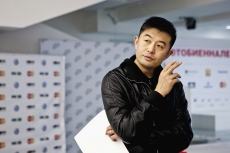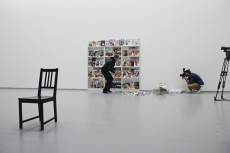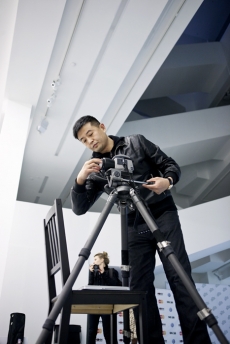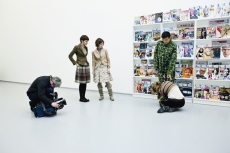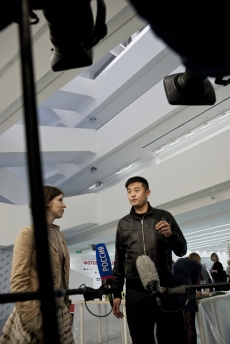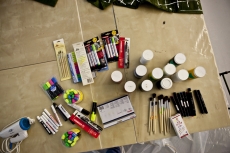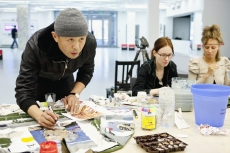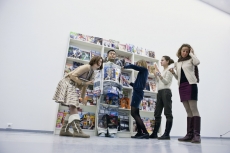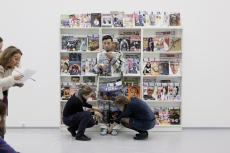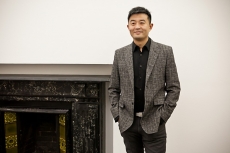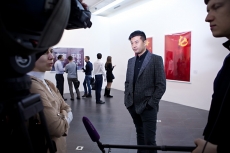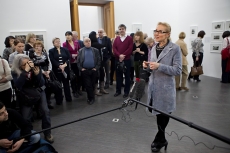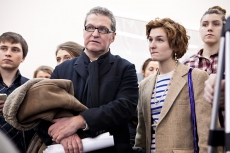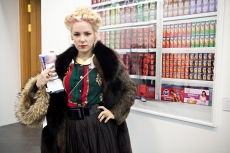Hide in the city
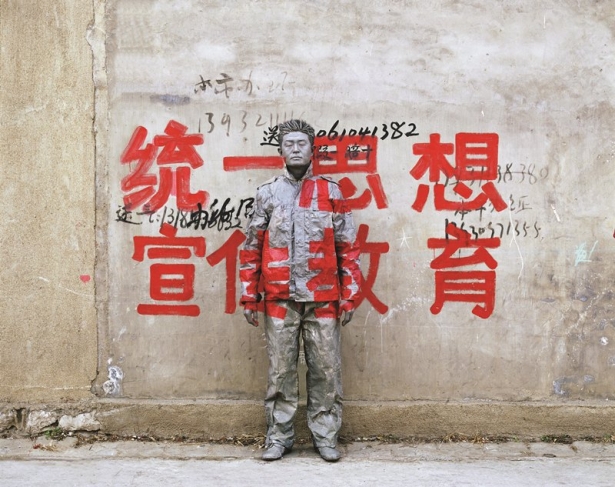
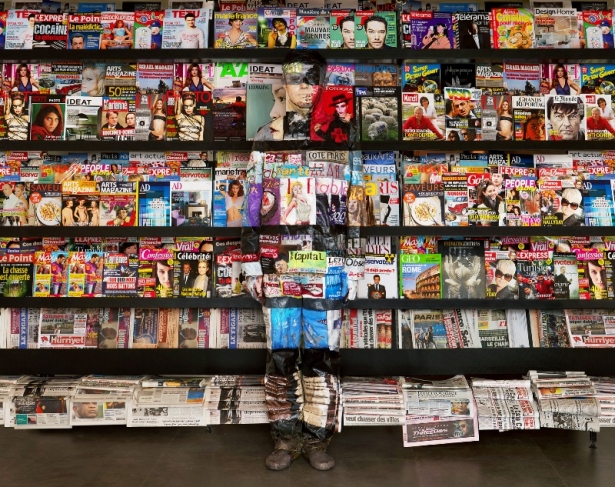
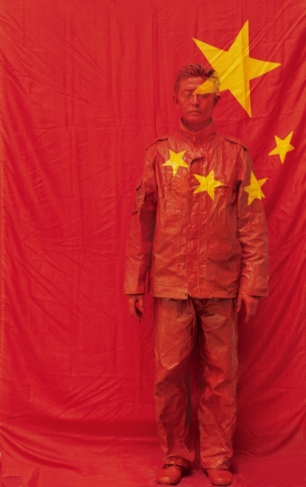
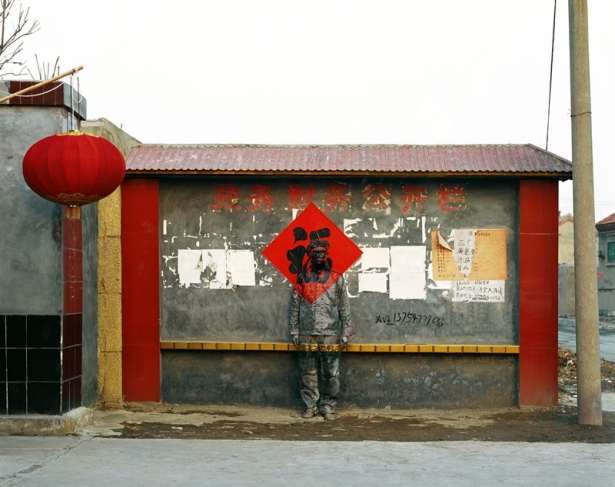
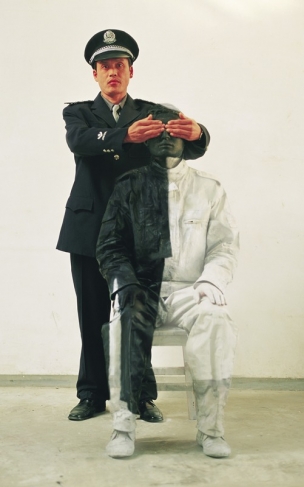
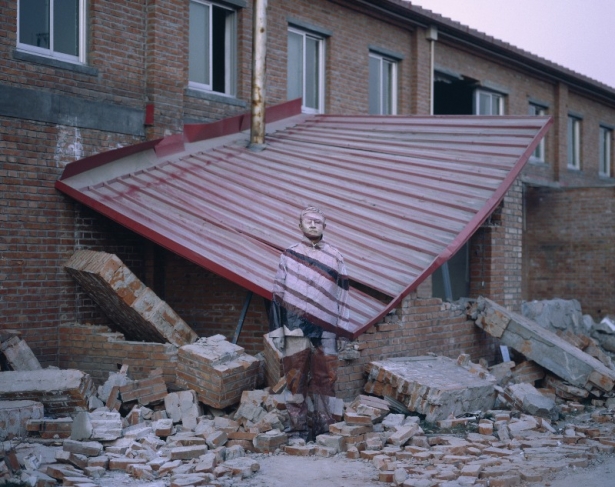
Liu Bolin. ‘Unify the Thought to Promote Education More’. From the ‘Hide in the City’ series – 36, 2007. Digital print. © Courtesy of Liu Bolin / Galerie Paris-Beijing
Liu Bolin. Bookshelf. From the ‘Hide in the City’ series – 02, 2011. Digital print. © Courtesy of Liu Bolin / Galerie Paris-Beijing
Liu Bolin. In Front of the Party’s Flag. From the ‘Hide in the City’ series – 43, 2006. Digital print. © Courtesy of Liu Bolin / Galerie Paris-Beijing
Liu Bolin. Open Field of Finance. From the ‘Hide in the City’ series – 41, 2007. Digital print. © Courtesy of Liu Bolin / Galerie Paris-Beijing
Liu Bolin. Civilian and Policeman No.2. From the ‘Hide in the City’ series – 16, 2006. Digital print. © Courtesy of Liu Bolin / Galerie Paris-Beijing
Liu Bolin. Suojia Village. From the ‘Hide in the City’ series – 02, 2006. Digital print. © Courtesy of Liu Bolin / Galerie Paris-Beijing
Moscow, 13.03.2012—13.05.2012
exhibition is over
Ekaterina Cultural Foundation
21/5 Kuznetsky Most, porch 8, entrance from Bolshaya Lubyanka street (
opening hours: 11:00 - 20:00, day off - Monday.
Tel: +7 (495) 621-55-22
Share with friends
Curator: Romain Degoul
Presented by the artist and Galerie Paris-Beijing
For the press
Are human beings animals?
All chameleon species are able to change their skin color. Rattlesnake can bury most of the body in sand soil. Thus they can not only protect themselves but also have better access to food. There are many other animals, such as geckos, beetles and so on, which have also learnt to so deal with the environment and their enemies in the long fight of life and death. In order to survive, hiding is often key.
Human beings are not animals. Because they do not know how to protect themselves.
The last three thousand years of human civilization seem to illustrate that human beings develop in the destruction of their environment and in the exploitation of others. The cost of this brilliant human civilization is that humans forget they are still animals, they forget their own instincts.
Human beings seem to have forgotten that they still need to think how to survive. While mankind is enjoying its development, its own greed is digging its grave. In human society, it is not enough to hide in order to make oneself safe. The human race is under threat. Rather than saying that the human species plays a key role, it would be better to say that we are just killing ourselves with our own hands.
What it means to be human today is complicated by economic development. What disappears with death is the human body, but what is slowly weakened by rushed economic development is the human spirit. Because thinking is the meaning of life, the latter death is more terrible than the former. War in the first half of the last century and shifts in the global economy in the second half have weakened our capacity to create meaning. Whether directly or indirectly, wittingly or reluctantly, human beings, who thought themselves masters of the Earth, are now being controlled by the forces of nature.
Human behaviour does illustrate this.
One hundred years ago, each Chinese man had a long plait on his back. At that time, this was normal. If a man had no plait or cut it short, it was a symbol of his innovative ideas. But now, the plait behind the back, which had in the meantime become a trademark of contemporary artist, is merely the patent of hairdressers, and maybe be disparaged by the majority of people with short hair. Long hair and plait themselves are meaningless. Their meaning depends on the outside environment. Human beings are born in society, and our thinking is determined by tradition. Human beings are so weak that their thinking is copied unconsciously by the next generation.
Mental enthrallment is more terrible than physical disappearance.
Sometimes I feel fortunate that I was not born in the 1950s. People of that generation have experienced everything, many experiences are common to the whole generation: first the mass cult of Chairman Mao, then the Cultural Revolution, an unconventional education or the lack of college education, the ‘iron rice bowl’ and being laid-off, public housing and the private ownership of houses, children going to school at their own expense and so on. The strength of culture and tradition can influence an entire generation’s thinking.
Today the world views of different people’s are also different. Each person chooses his/her own way in the process of contacting outside world. I choose to merge myself into the environment. Rather than saying that I disappear in the environment, it would be better to say that the environment has eaten me up and I cannot choose to be active or passive.
In a context that empasizes cultural heritage, concealment is actually no place to hide.

